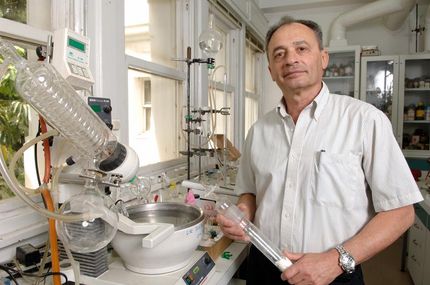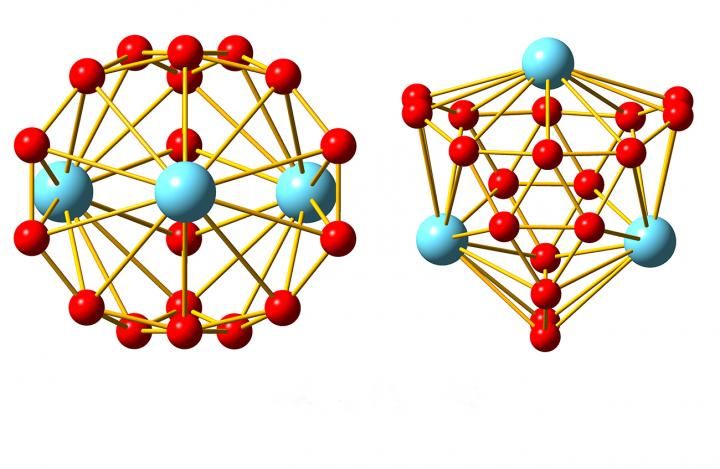Nanoreactors for Reaction Cascades
Nanoscopic bubbles with plastic membrane and built-in enzymes for multistep one-pot reactions
Living cells are highly complex synthetic machines: Numerous multistep reactions run simultaneously side by side and with unbelievable efficiency and specificity. For these mainly enzymatic reactions to work so well collectively, nature makes use of a variety of concepts. One of the most important of these is division into compartments. enzymes are not only separated spatially, but also positioned in specific locations within the cell. Researchers from the Netherlands, led by Jan C. M. van Hest and Alan E. Rowan, have now developed an approach to copy this idea. They constructed nanoreactors by controlled positioning of two different enzymes in the central water reservoir or the plastic membrane of synthetic nanoscopic bubbles. In combination with a third enzyme in the surrounding solution, this system has made it possible to run three different enzymatic reactions simultaneously, without interference, in a "one-pot" reaction.
To mimic a cellular environment, the scientists produced nanoscopic bubbles surrounded by a membrane made of a special plastic. The plastic is a block copolymer that is analogous to a lipid, the natural building block of cell membranes, in its structure, with a water-friendly "head" and a water-repellent "tail". In analogy to liposomes, which are made from lipids, these bubbles are called polymersomes. Thanks to nearly limitless possibilities in the production of these plastic membranes, the spectrum of properties displayed by polymersomes can be precisely tailored.
The researchers produced their polymersomes such that they let small molecules pass through while forming a barrier to larger ones. This allows enzymes to be trapped inside the polymersomes (in the water reservoir) while the smaller substrate or product molecules pass through unhindered.
To demonstrate the potential of their "nanoreactors", the researchers bound the enzyme horseradish peroxidase into the membrane itself. Within the water reservoir, they trapped the enzyme glucose oxidase. The surrounding solution contained the enzyme lipase B. Glucose molecules with four acetyl groups attached were added as the substrate. In the first step, the lipase B split off the acetyl groups. The resulting glucose could cross the membrane, where it encountered the glucose oxidase and was oxidized by it. This reaction formed hydrogen peroxide, which is just what the horseradish peroxidase was waiting for in order to convert the sample substrate ABTS (2,2'-azinobis(3-ethylbenzthiazoline-6-sulfonic acid)) - also contained in the solution - into its radical cation.
Original publication: Jan C. M. van Hest et al.; "Positional Assembly of Enzymes in Polymersome Nanoreactors for Cascade Reactions"; Angewandte Chemie International Edition 2007.
Other news from the department science
These products might interest you

Anopore™ by Cytiva
Precise filtration made easy with Anopore inorganic membranes
The aluminum oxide filter membrane that can increase the purity or yield of your analyte

Hahnemühle LifeScience Catalogue Industry & Laboratory by Hahnemühle
Wide variety of Filter Papers for all Laboratory and Industrial Applications
Filtration Solutions in the Life Sciences, Chemical and Pharmaceutical Sectors

Get the chemical industry in your inbox
By submitting this form you agree that LUMITOS AG will send you the newsletter(s) selected above by email. Your data will not be passed on to third parties. Your data will be stored and processed in accordance with our data protection regulations. LUMITOS may contact you by email for the purpose of advertising or market and opinion surveys. You can revoke your consent at any time without giving reasons to LUMITOS AG, Ernst-Augustin-Str. 2, 12489 Berlin, Germany or by e-mail at revoke@lumitos.com with effect for the future. In addition, each email contains a link to unsubscribe from the corresponding newsletter.



























































